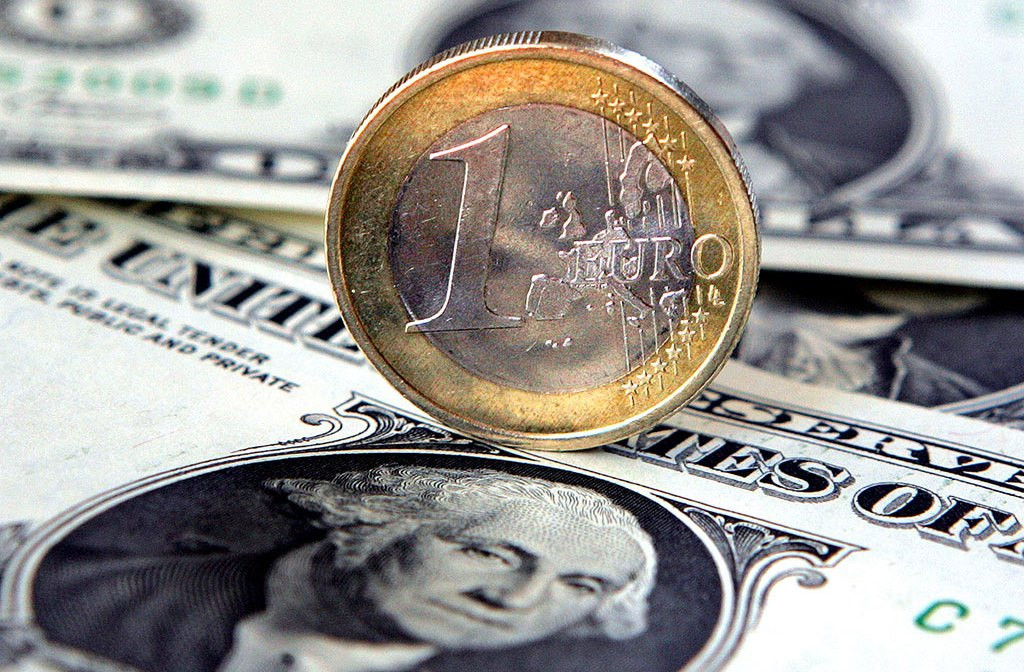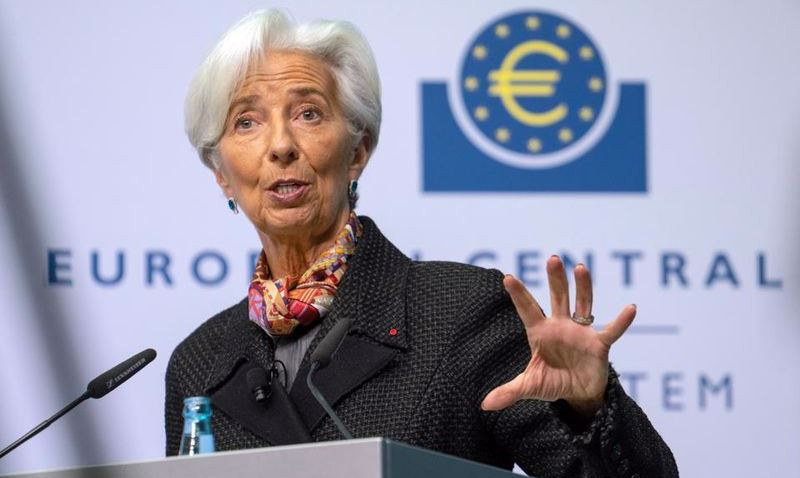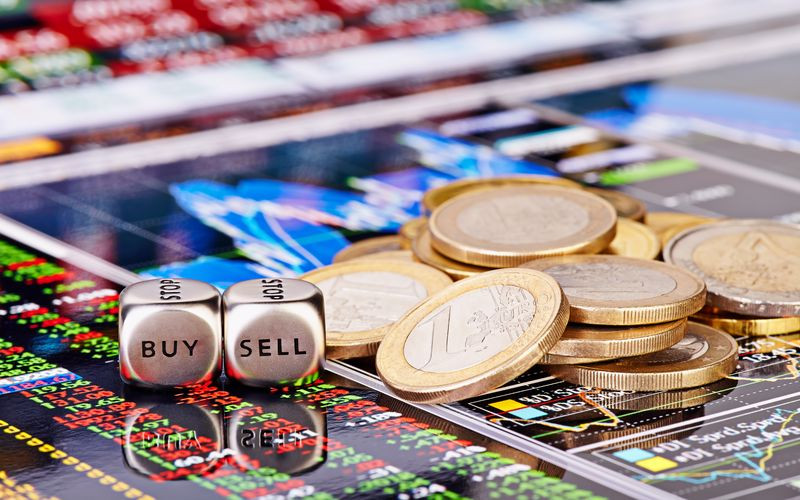
The US currency lost ground in the second half of the current week.
The rally in global equity markets has undermined the value of the greenback as a safe haven asset.
Moreover, the markets proved to be too aggressive predicting an increase of the US key interest rate by 5-7 times this year and by 50 basis points in March.
Consequently, the dollar lost ground after the January FOMC meeting.
The day before, the USD index hit a new weekly low of 95.80 indicating a four-day downtrend.
This week the focus has shifted from the Fed to the ECB.
The euro was in demand ahead of the publication of the EU regulator's interest rate decision.
The single currency has gained over 1% against the greenback since the beginning of the week.
While no QE corrections are expected from the ECB, a recent spike in inflation is the reason why many traders predict a rate hike in the eurozone by the end of 2022.
Markets expect a 30 basis point rate hike in the eurozone this year. However, the ECB states that any move in 2022 is very unlikely.
Yesterday's consumer price report showed a rise in inflation regarding major currency pairs from December's 5% to a new record high of 5.3%. Economists had expected the figure to slow to 4.4%, but the consumer basket continues to get more expensive.
Therefore, the ECB will most likely start to normalize its policy amid this background.

If Christine Lagarde takes into account a rate hike this year, it would bring the regulator's stance closer to market prices and justify a long position in the euro.
A hint of implementing a hawkish policy might become a driver for the EUR/USD pair to rise to 1.1400. However, if today the ECB states that there are no reasons for the policy tightening, the euro is bound to aggressive sell-off. In this case, the EUR/USD pair risks to lose ground this week and to decline again at 1.1200.
Westpac strategists said that the hawkish results of the ECB meeting might put pressure on the US dollar.
On Wednesday, the US currency fell nearly 0.3% against its major rivals and closed trading in negative territory for the fourth straight day.
The greenback continued its losses after a report from ADP showed that the US economy lost 301,000 jobs in January, potentially marking the first decline in employment since December 2020.
These figures greatly contrast to forecasts of a 200k increase and predict that Friday's nonfarm payrolls will be weak.
On the one hand, the weak US jobs report could further weaken the dollar.
On the other hand, the Fed has made it clear that it was not concerned about the labor market. Last week, US Fed Chair Jerome Powell noted that the regulator had already actually fulfilled its job creation mandate.

If Friday's nonfarm payrolls prove to be weak, they may not cause much reaction in the market as it will not affect the outlook for interest rate hikes in the US.
However, let's first observe how investors react to this data.
Besides, it is not clear whether the market will be able to ignore the fact that the ECB will maintain a wait-and-see attitude, at least until the March economic forecasts.
Saxo Bank experts believe that this is likely only if risk appetite continues to grow rapidly, ensuring a complete reversal after the recent fall. They said that the euro would not need much support in terms of risk appetite if the ECB was willing to raise interest rates.
On Wednesday, the EUR/USD pair renewed its weekly high of 1.1330. Then it consolidated and is trading under 1.1300 on Thursday.
Meanwhile, the USD index returned to its 50-day moving average and remained steady on Thursday at 96.00.
The greenback strengthened slightly amid weakening risk sentiment.
Today, US stock futures are down 1% on average, indicating cautious market sentiment.

Investors are not active ahead of the ECB's monetary policy verdict.
The European regulator will almost certainly keep policy unchanged on Thursday. However, it may have to admit that inflation may remain high longer than forecasted. That would be a signal that some investors might take as a hint of a more rapid withdrawal of monetary stimulus.
Insight Investment experts said that in case the eurozone inflation remained high, the ECB's bond-buying program would probably end before the end of 2022. They added that then the regulator could raise interest rates in December.
The ECB states that inflation will soon reduce without its intervention and that long-term price pressures are too weak, indicating that monetary support is necessary.
This view is currently being disputed by investors and a number of policymakers. Besides, January's inflation rate of 5.1%, all-time high in eurozone history, exerts pressure on ECB President Christine Lagarde to acknowledge the rising risks.
However, the ECB head is unlikely to change her view that inflation will return to the target by the end of the year. Moreover, her main message is likely to remain that there will be no rate hikes this year, giving chances for higher borrowing costs in early 2023.
However, Lagarde may indicate inflation risks, emphasizing that price growth in the EU is fundamentally different from price growth in the US, considering the weak wage pressure and the relative lag in the consumption recovery.

The main factor pushing up consumer prices in the US is sharply higher fuel prices, including oil.
The key issue is the situation with commodity prices when strong winter demand wanes. The coming months should also show whether other inflationary factors, such as electricity prices and supply bottlenecks, will abate.
Generali strategists said that in case they saw inflation consolidated at levels above current official forecasts, then all central banks would be forced to take more aggressive steps, including the ECB. However, they noted that this fact was doubtful.
Last week, Lagarde said that when the asset purchase program was completed, the ECB members would consider other measures, including a rate hike. She noted that they had to study the statistics carefully and be patient.
If the ECB head downplayed inflation concerns and continued to push back against market expectations of a rate hike, the difference in the course of monetary policy in the eurozone and the United States, where the Fed has almost explicitly said it plans to raise rates as early as March, will become even more pronounced.
In such a scenario, the EUR/USD could be under increased pressure. Currently, it is not developing the downward impulse, consolidating under the level of 1.1300.
The major currency pair is facing strong resistance around 1.1320 (area of convergence of the 100- and 200-day moving averages). If bulls manage to turn this level into support due to the hawkish statements of the ECB, they might target at 1.1350 and 1.1400.
On the other hand, if the level of 1.1300 level is considered as resistance, the support at 1.1250 and then at 1.1200 will be relevant.





















